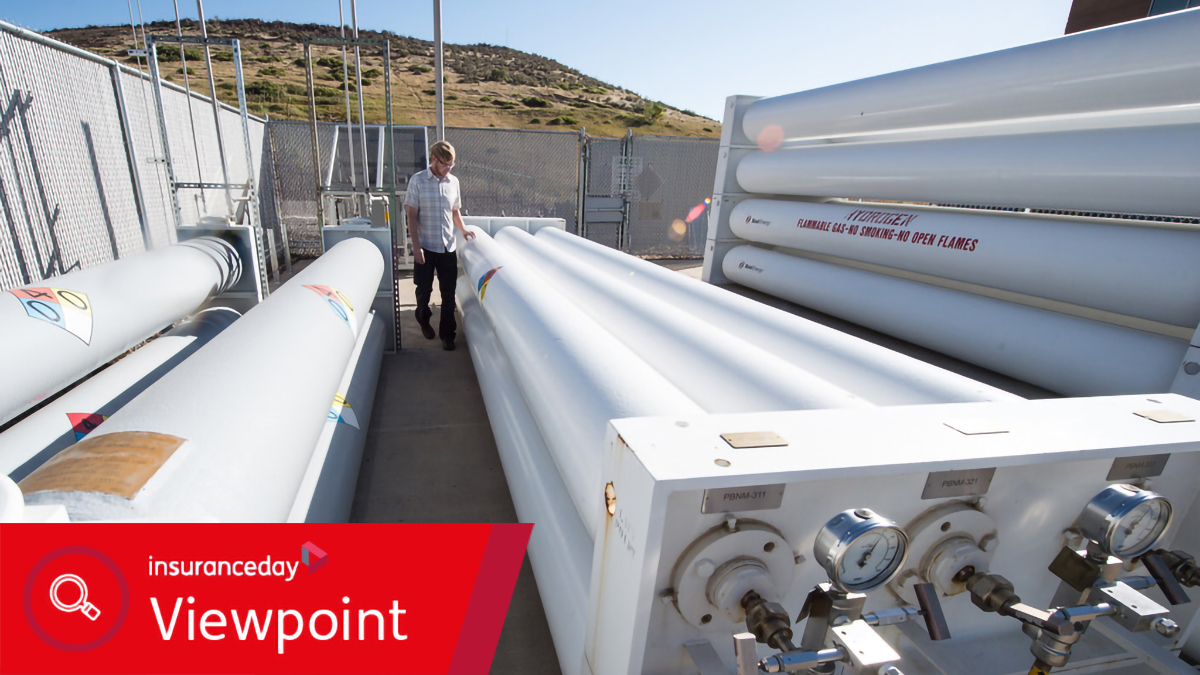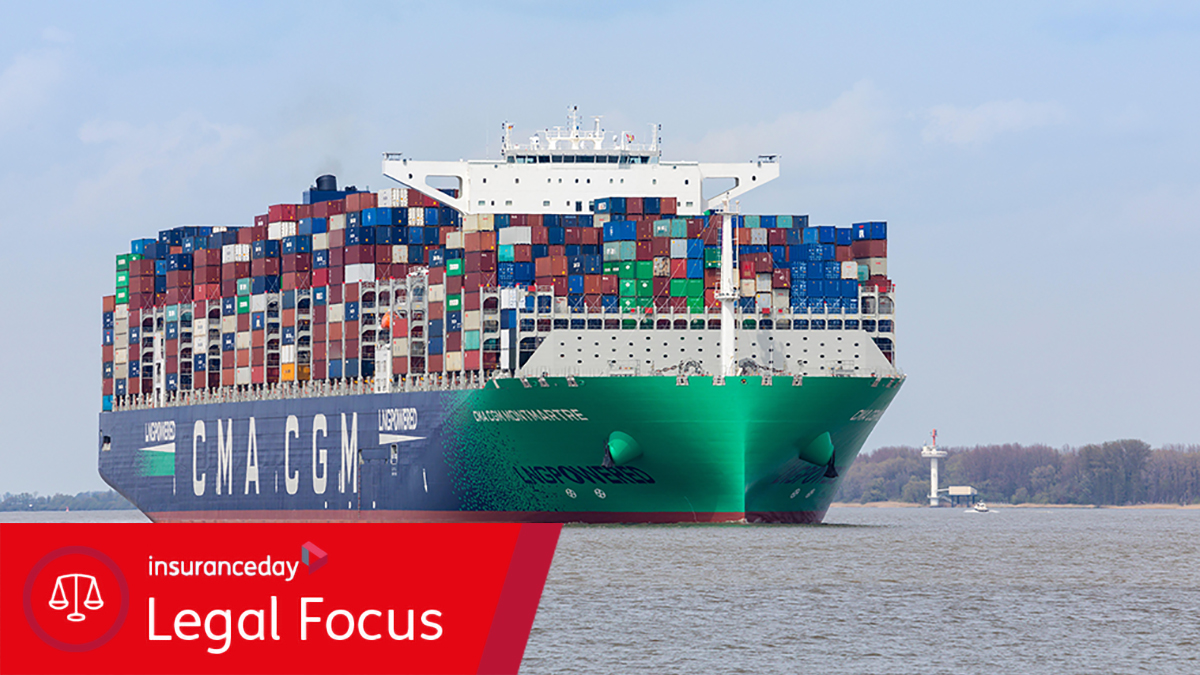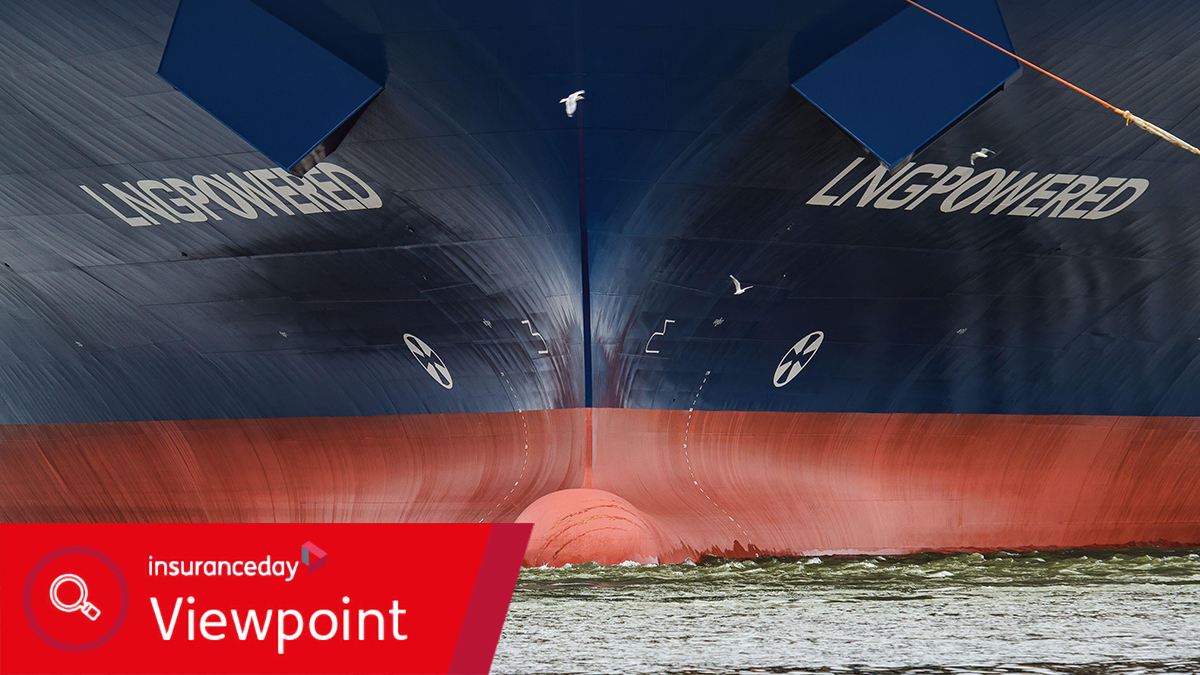Investors in clean shipping must accept risk of stranded assets: UCL’s Smith
There is a 'natural competitiveness' between different fuels but also a 'high probability' ammonia is the lowest-cost solution for decarbonising shipping in the long run, associate professor of energy and transport at University College London and director of University Maritime Advisory Services, Dr Tristan Smith, says
Dr Tristan Smith, director of Umas, outlines the investment risks associated with the fuels needed to decarbonise shipping
Global shipping, which accounts for about 3% of total greenhouse gas (GHG) emissions, is not covered by the Paris Agreement and responsibility for this is instead borne by the International Maritime Organization (IMO).
In 2018, the IMO set a target to reduce GHG emissions from international shipping by “at least” 50% by 2050 compared with the 2008 level. A revised IMO strategy, agreed in July this year, sets the goal of net-zero emissions by “near to 2050”. Countries agreed to cut total shipping emissions “at least 20%, striving for 30%” by 2030 from a baseline of 2008. They also agreed to cut emissions “at least 70%, striving for 80%” by 2040 compared with 2008.
The final IMO agreement says measures ought to take into account the “well-to-wake” GHG emissions of marine fuels. Well-to-wake refers to the entire process of fuel production, delivery and use onboard ships and all emissions produced therein. This requirement means to avoid the use of clean fuels produced on land in an emissions-intensive manner, such as by using coal.
Untangling the net
In the IMO’s latest strategy, “net” leaves an unfortunate loophole for future uses of emissions offsets, according to Dr Tristan Smith, associate professor of energy and transport at University College London (UCL) and director of University Maritime Advisory Services (Umas).
In an interview with Insurance Day, Smith says: “Broadly speaking, when you apply ‘net zero’ to a country or government, this is because there are sources of – and also sinks for – greenhouse gas emissions.
“You can have a positive greenhouse gas emission, as long as you’ve also got a counterbalancing negative emission. That makes for ‘net’ on condition we’re sequestering CO2, which can happen from afforestation or technologies like bioenergy combustion with carbon capture and storage on the exhaust.
“There are various things you can do as a state, recognising you’ve got land and rock formations that can store emissions. In shipping, of course, there are no land or rock formations and so the IMO’s regulatory jurisdiction is not inclusive of sinks; it’s only inclusive of sources of greenhouse gas emissions.”
“What we need is low-cost electrons. We don’t know how low cost we’ll get with solar and wind, while nuclear isn’t there but maybe it will be in the future. The point is the shipping industry doesn’t need to agonise over where the electricity comes from”
Dr Tristan Smith
University College London
Therefore, many countries interpret “net” in the IMO context of net zero as the shipping sector being able to purchase negative emissions from governments as offsets. Unfortunately, the IMO strategy is ambiguous on this point; it does not explicitly say whether net zero for shipping excludes offsets. “The fact that language isn’t there is a clear signal the consensus view the IMO wanted to present was to leave offsets on the table. That’s where it’s unhelpful,” Smith says.
The important thing, he continues, is “net” in the IMO strategy is only in the context of its “near to 2050” target. Its wording for GHG emissions reduction by 2030 and by 2040 are well-to-wake targets.
He says: “The 2030 and 2040 targets are unambiguous. It means we have to do the striving for 80% without any offsets. The question is whether we’re going to have to come back to the discussion at the IMO and someone is going to say, ‘We’ve done 80% but to get to zero we going to need offsets for the last 20%’. That’s a conversation for the future, I think.”
Investment risks
What do insurers need to know? A good place to start is the investment risks associated with clean fuels.
Smith says there is a “natural competitiveness” between the different fuels but also a “high probability” ammonia is the least costly solution for decarbonising shipping in the long run. This assumption creates investment risk for an asset not aligned with the ammonia pathway because it could become a stranded asset.
There are various ways to mitigate the risk of stranding. “You can accept these fuel developments are transitory and therefore there is a business case for paying off before the period of market use is reached,” Smith says.
“Methanol certainly has that potential and we can see today biofuels, used for biogenic methanol, are attractively priced compared with what it would cost to make green ammonia or even blue ammonia.”
Green refers to fuel produced using renewable energy, while blue is when carbon generated from steam reforming is captured and stored underground through industrial carbon capture and storage.
“There is a credible business case, therefore, for using methanol for some period into the future but that future is finite if demand for biogenic carbon increases very rapidly, pushing prices up,” Smith says.
Umas’s modelling forecasts the green ammonia pathway will be more competitive “somewhere in the 2030s or early 2040s”, he adds.
That means a five- to 10-year window for some of these transitory fuel solutions.
“That’s not very long when compared with the life of a ship, so people need to be super-careful about the stranded asset risk,” Smith says. “It doesn’t mean they shouldn’t go for it, but they need to see what they would do to that asset. If it’s a ship then they need to be ready to retrofit it with ammonia and if it’s a fuel supply chain then be ready to expect a very short return on investment. The cost of a very short life would need to be factored into the mix.”
Making green fuel
Umas models “tens of different ways” to make methanol, Smith says. “You can make it directly out of the biogenic feedstock from biogas. You can make it using green hydrogen with a carbon atom, which you add in to the molecule, which has been extracted either from biogenic carbon – so from biomass – or it has been captured from an industrial process.”
Neither of those two ways, in UCL’s analysis, are wholly zero-carbon or scalable.
“They’re technologically feasible but they don’t look attractive for the same argument biofuels don’t look generally attractive,” Smith stresses.
“If you’re reliant on a scarce supply, it can work for a period of time until the whole of the market jumps on it and then the price goes up and it’s not credible or scalable because there just isn’t enough biogenic carbon. Then you have to go to direct air-captured carbon, which is credible as a green fuel. In fact, that’s the original definition of green fuel before green methanol was rebranded because any sort of methanol was going to be better than fossil fuels.”
Methanol produced from direct air capture with renewable energy as the input could be “just as good as” green ammonia, which involve extracting nitrogen from the atmosphere and combining it with hydrogen atoms.
The problem is green methanol is 30% to 50% more expensive and that is what Smith warns creates stranded asset risk.
“It’s a very similar process to the ammonia synthesis, it’s just it requires a massive amount more of renewable electricity,” he says. “That’s not a technological constraint, but more from thermodynamics. It’s entirely within the laws of physics that it is more energy-intensive to extract carbon than it is to extract nitrogen from the atmosphere. No one is going to solve that in a clever way in the next few years.”
Green, blue and pink
The terminology “green” and “blue” has become unhelpful, Smith warns, adding percentages are a better measure. “It’s all about the well-to-wake greenhouse gas reduction and if you do that with methanol there’s no reason why you can’t get to the mid-to-high 90s, in percentage terms.”
That is what needs to be reached by 2040, according to the IMO’s latest strategy for the decarbonisation of shipping. “It’s the number we look for as the minimum potential greenhouse gas intensity reduction – of 90% – rather than use this term ‘green’,” Smith says.
Another colour, pink, refers to nuclear power. “We should make hydrogen from any source of low-carbon energy that is affordable. We’re agnostic as to whether that’s nuclear or solar or wind,” Smith says.
“We don’t have any particularly strong analysis that would eliminate nuclear from the supply but the cost of the nuclear electricity in most evaluations is higher than the cost of solar and wind, so there isn’t a compelling case for pink hydrogen.”
Smith has seen no evaluations that indicate nuclear power – when the construction cost of a reactor is included – is cheaper per kilowatt hour than the best-performing solar and wind installations.
“I don’t see how that makes any sense,” Smith says. “It all comes down to the cost per kilowatt hour, whether on land from a large nuclear installation or at sea from a small modular reactor.”
Citing a 2020 joint report by the International Energy Agency and the OECD Nuclear Energy Agency, Smith says nuclear long-term operation – life extensions for existing reactors – is the cheapest form of any electricity production.
“But if you compare conventional nuclear it doesn’t look that good relative to onshore wind and utility-scale solar. That’s before you factor in the fact that, to make hydrogen you would naturally do this in the very cheapest – best renewables – locations globally and be able to get to the bottom of the ranges,” he says.
Nuclear power would still not be cost-competitive compared with renewables if used as small modular reactors (SMRs) placed on commercial ships to produce green hydrogen, Smith continues, and he has “yet to be convinced” molten salt reactors are a credible technology. “This technology has been in development for 60 years and I don’t know why someone suddenly decides now is going to be the time when they’ll be able to break some of the nuclear physics problems they’ve had,” he says.
There are other types of SMRs under development, however, including nuclear submarine technology from Rolls-Royce.
“It’s not that you can’t make SMRs,” Smith says. “The question is what’s the cost of the electricity they’ll produce. Invariably it seems to be about 10 pence per kilowatt hour, while renewable energy is coming in at half or less than half of that, so I don’t understand why we should look particularly at nuclear. That doesn’t mean it can’t be part of the solution, but it’s not cost-competitive.”
Smith says the cost of the Rolls-Royce SMR and the Hinkley Point C nuclear power plant under construction in Somerset, England are very similar. Therefore, nuclear power versus renewables is “just a distraction” from the issue, Smith stresses. “What we need is low-cost electrons. We don’t know how low cost we’ll get with solar and wind, while nuclear isn’t there but maybe it will be in the future. The point is the shipping industry doesn’t need to agonise over where the electricity comes from.”
The idea of putting a nuclear reactor on a ship that is mobile is not an attractive option, however, since there are countries with political opposition to nuclear energy.
“If we’re talking about stationary production, I don’t have a problem with nuclear in general, but it’s not appearing as economic. If we’re talking about placing a nuclear reactor on a ship as a power plant the problem then is where can you actually trade,” Smith says.
“There is a scenario where a bilateral agreement between two countries that are nuclear power producers and therefore understand the technology enables a route to use nuclear reactors. That’s relatively plausible but it doesn’t solve the need for moving goods around the world. It just means there are a subset of voyages you could start to imagine as a nuclear route, assuming you could make the economic case for it.”
Chicken and egg
Smith warns against waiting for the perfect fuel, saying the operative word is transition.
“Conversations about decarbonisation immediately go to the fuels topic but that oversimplifies the nature of the transition,” he says, “because that happens while you’re in the process of discussing the regulation that would make it happen.”
The key to enabling faster investment in scalable zero-emission fuels, he continues, is early adoption.
“I can’t think of a good historical example of where the IMO policy was what enabled some early adoption. Take sulphur limits; some of the actions taken in individual countries that led to exploring alternative fuels and scrubbing technology wasn’t because of any IMO policy, so why are we imagining the IMO is suited to do the kind of innovation stage we are entering at this point in time with emissions-free fuels?”
GHG emissions need to be halved by all sectors by 2030 but shipping is not going to achieve that “unless something miraculous happens”, Smith says, “so it is far behind the curve.”
The point is to gain experience and to support “no regrets” investments. “We need to be very careful about how we communicate about the genuine scalability in the long run of some fuels, like liquefied natural gas and biofuels. There’s the biomethane pathway, but it’s not something that provides anything like the volumes of energy shipping needs.”



